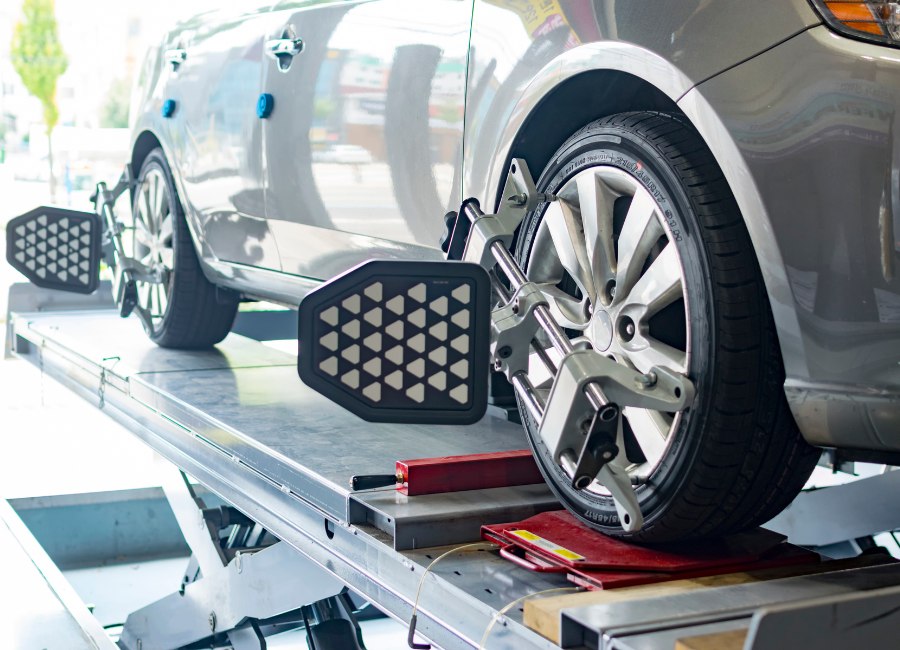How To Know When Your Car Needs Alignment

Ensuring your vehicle maintains proper alignment is crucial for safety, tire longevity, and overall driving experience. Misalignment, even slight, can lead to uneven tire wear, compromised handling, and increased fuel consumption. Detecting the early signs of misalignment can save you money and prevent more serious issues down the road. This article details the key indicators that suggest your car may be in need of an alignment.
Uneven Tire Wear: The Most Obvious Clue
Perhaps the most telling sign of misalignment is uneven tire wear. This isn't just a matter of one tire wearing faster than the others; it's about the *pattern* of wear. Look for:
- Feathering: This occurs when the tire tread blocks are worn at an angle, creating a sharp edge on one side. Run your hand across the tire; if it feels smooth in one direction but rough in the other, feathering is likely present. This is a strong indicator of toe misalignment.
- One-Sided Wear: If the inside or outside edge of your tire is wearing significantly faster than the rest of the tread, you likely have a camber issue. Excessive positive camber (tire leaning outward) wears the outside edge, while excessive negative camber (tire leaning inward) wears the inside edge.
- Cupping or Scalloping: This manifests as dips or high spots around the tire circumference. While often related to worn shocks or struts, it can also be exacerbated by misalignment.
Regular tire inspections are vital. Check your tire pressures at least once a month and visually inspect the tread for any unusual wear patterns. Early detection can prevent premature tire replacement.
Pulling or Drifting: A Steering Issue
Another common symptom of misalignment is the vehicle pulling or drifting to one side. This means that when driving on a straight, level road, your car veers to the left or right, requiring you to constantly correct the steering. This pulling sensation can be subtle at first, but it will become more pronounced over time.
Before automatically assuming misalignment, rule out other potential causes, such as:
- Tire Pressure Differences: Unequal tire pressures can cause a pull. Ensure all tires are inflated to the recommended pressure.
- Brake Drag: A sticking brake caliper can create drag on one side, causing a pull.
- Road Crown: Roads are often crowned (sloped) for drainage. This can cause a slight pull towards the lower side, but it shouldn't be excessive.
If you've eliminated these factors and the pulling persists, misalignment is the likely culprit.
Steering Wheel Off-Center: A Visual Cue
A steering wheel that is not centered when driving straight is a strong sign of misalignment. Ideally, the steering wheel should be perfectly level when traveling in a straight line. If you notice that the steering wheel is consistently tilted to one side, even slightly, it's time to have your alignment checked. This is often caused by toe misalignment, where the wheels are pointing slightly inward or outward.
Vibrations or Shaking: A More Serious Concern
While vibrations can stem from various sources (e.g., unbalanced tires, bent wheels), they can also be aggravated by misalignment. If you experience vibrations or shaking in the steering wheel, seat, or floorboard, especially at higher speeds, investigate the possibility of misalignment, especially if it is coupled with other symptoms listed in this article.
After Impact: A Common Cause
Any significant impact, such as hitting a pothole, curb, or debris in the road, can knock your car out of alignment. Even seemingly minor impacts can subtly alter the suspension geometry, leading to misalignment. If you've recently experienced an impact, it's wise to have your alignment checked, even if you don't notice any immediate symptoms.
Regular Maintenance: Prevention is Key
Even without noticeable symptoms or recent impacts, it's recommended to have your wheel alignment checked periodically, typically every 12,000 miles or annually, as part of your routine maintenance schedule. This proactive approach can help prevent premature tire wear and maintain optimal handling. Remember to always consult your vehicle's owner's manual for specific maintenance recommendations.
By being vigilant and recognizing these key signs, you can identify and address alignment issues early, saving you money on tires and ensuring a safer, more enjoyable driving experience.
